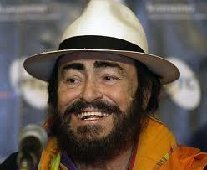
Human skin is an amazing organ -- protective, waterproof, and exceedingly useful. It's also constantly changing and regenerating itself. That said, what happens to dead skin cells? You might be a little grossed out to find out where they go and just how many you lose each day.
Your skin is composed of several layers. The layer you can see is called the epidermis. It's composed of cells made of keratin, a hard substance that also forms your hair and nails. In other species, keratin forms hooves, claws, horns, and even the shells of turtles and the spines of porcupines. The individual cells are called keratinocytes [source: National Geographic].
Humans shed about 600,000 particles of skin every hour. This is about 1.5 pounds a year. By age 70, the average person will have lost 105 pounds of skin in their lifetime.
The skin is the body's largest organ and is made up of water, proteins, lipids and different minerals and chemicals. Its job is to protect the body from infections and germs. The skin regenerates itself about every 27 days. The stratum corneum is the outer layer of dead skin cells that used to exist in the epidermis. The epidermis is the outer layer of the skin and is also the thinnest layer. It is responsible for protecting the body from the environment.
From the Slow Roasted Italian
CHICKEN ALFREDO TORTELLINI SOUP
- 2 tablespoons unsalted butter
- 1/2 medium yellow onion, diced
- 4 ounces baby carrots, halved lengthwise and sliced into half-moons
- 2 cloves garlic, minced
- 1 pound boneless skinless chicken breasts, cut into bite-size cubes
- 1 teaspoon kosher salt
- 1/2 teaspoon freshly ground black pepper
- 1/4 cup all-purpose flour
- 4 cups reduced-sodium chicken stock
- 1 cup half-and-half
- 1 teaspoon crushed red pepper flakes
- 9 ounces cheese tortellini, frozen or fresh
- 2 cups freshly shredded Parmesan cheese
- 2 ounces fresh baby spinach
- Warm a large pot over medium-high heat. Once you can feel the heat when you hold your hand 6 inches above the pot, add the butter and let it melt. Add the onion and carrots. Cook the vegetables until the onions are translucent, about 3 minutes. Add the garlic and cook for 30 seconds.
- Then add the chicken, salt and pepper. Stir to combine. Cook for 3 minutes, just to get a little color on the chicken, stirring occasionally. Don’t worry about the chicken being cooked through, because we are going to continue cooking it.
- Sprinkle the flour over the chicken and veggies. Stir to coat everything and continue cooking for 2 to 3 minutes to cook out the floury taste. Stir in the chicken stock, half-and-half and red pepper flakes. Continue cooking until the soup thickens, 5 to 10 minutes.
- Add the tortellini to the pot and cook until al dente (has a bite to it), 5 to 7 minutes (frozen takes longer). Remove the pot from the heat. Sprinkle a handful of cheese over the soup and stir. Once it has melted into the soup, add another handful. Slowly melting the cheese will give the soup a smooth consistency. Taste for seasoning and add salt and pepper as necessary. Pour into bowls and garnish with the spinach.
- To reheat cream or cheese soup, warm it in a pot on the stove top over low heat, stirring frequently. Add milk to loosen the soup. Cheese- or milk-based soups need to be warmed slowly to prevent them from separating or having a grainy texture.
Columbus Day on the second Monday in October is observed in the United States each year. The day signifies Christopher Columbus’ arrival to America on October 12, 1492.
Christopher Columbus was long given credit for discovering North America. However, long before Columbus was born (1451-1506), Leif Erikson landed on these shores. The Italian-born explorer did sail across the Atlantic, though, and more than once. In fact, he made four transatlantic voyages. His first was in 1492. Hence the rhyme, “In 1492, Christopher Columbus sailed the ocean blue.”
During the 1492 expedition, Columbus was looking for Asia. He and his crew landed their three ships somewhere near the modern-day Bahamas. While he may not have discovered an already populated continent, he did spur further exploration and colonization of North America.
COLUMBUS DAY HISTORY
Colorado first observed Columbus Day in 1906 as it became an official state holiday. More and more people and states began to recognize the observance.
In 1937, Columbus Day became a federal holiday in the United States. Many instances of people observing Columbus’ voyage exist since the colonial period. In 1792, celebrations recognizing the 300th anniversary of his landing in the New World took place in New York City and other US cities. President Benjamin Harrison called upon the people of the United States to join in celebration of Columbus on the 400th anniversary of the event. During the anniversary in 1892, teachers, preachers, poets, and politicians used the day to teach ideals of patriotism. These patriotic teachings were framed around themes of support for war, citizenship boundaries, the importance of loyalty to the nation and celebrating social progress.
In 1970, Columbus Day was changed to the current observation on the second Monday in October.
















1 comment:
A Happy Christopher Columbus Day to you. He was not a nice man- but nice men don't risk their lives for riches. The Queen knew of his exploits, but did nothing to stop him until he made more commission than she deemed appropriate- so she clawed it back to her own pocket. They ended their lives on not the best of term.
Hugh Jackman is a wonderful actor, and it seems, human being.
Reckless or courageous may be argued- Theodore Roosevelt is a man I greatly admire6
The soup sounds spectacular. We have a minor heatwave coming- tortellini soup sounds like a good way to celebrate when it leaves.
Blessings-
.
Post a Comment